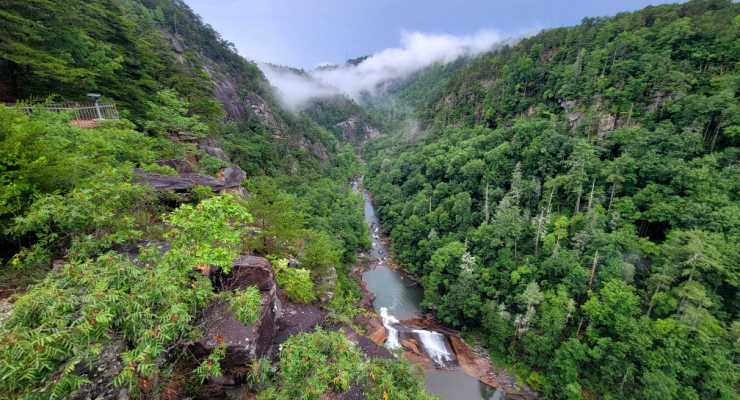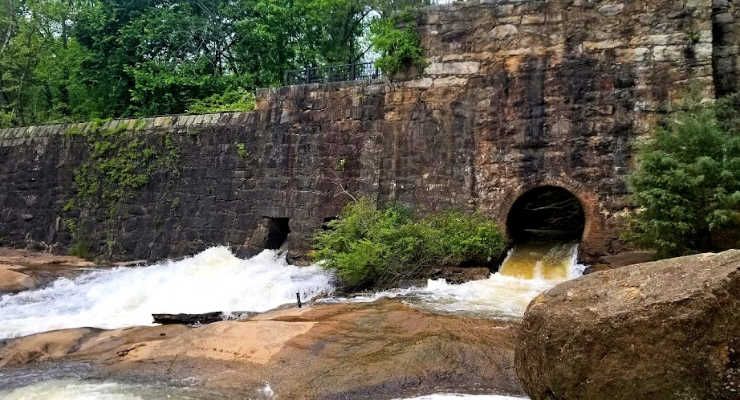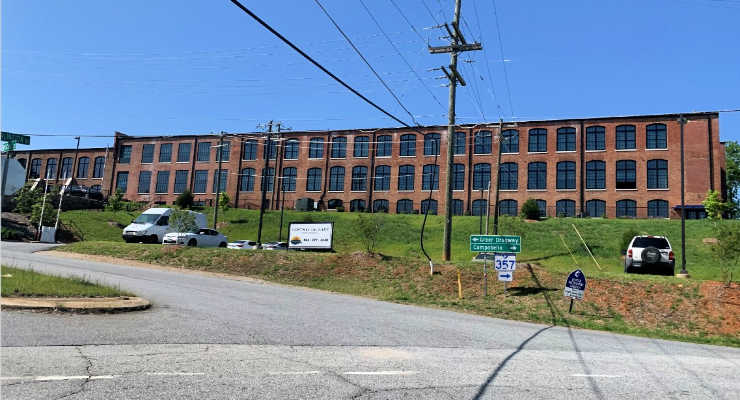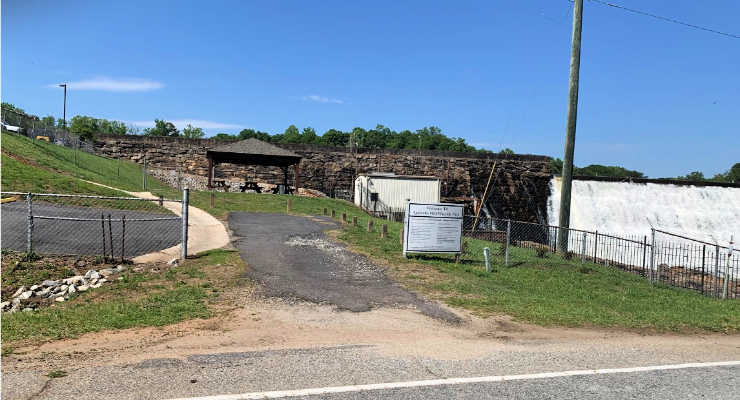Looking for a unique history lesson at textile mills in South Carolina? The Upstate of South Carolina has a rich history of textile production. Many cities and towns were heavily influenced by the presence of textile mills and the eventual closure of those mills. When the mills were at their prime, Mill Villages boasted homes, schools, baseball teams, and even vacation destinations. You can see evidence of this mill history and mill village life all around the Upstate if you know where to look.
Many previous textile mills in South Carolina are now home to parks where you can explore their history, as well as enjoy some time outdoors. Load up the kids and check out these historic textile mill sites for today’s history lesson and get some sun while you’re at it! It’s so much more fun than learning history in a textbook, right?
Here’s a map of where they are located:
Please respect all current park ordinances when you’re exploring!
Textile Mills in South Carolina: Greenville Area
Pelham Mill
The foundations of the Pelham Mill sit at what is now Pelham Mill Park. The Pelham Mill changed ownership and name several times, but it began in 1820 as the first textile mill in Greenville and closed in 1935. Fire destroyed the empty mill in 1943.
At the site, you’ll see the bases of two smokestacks, as well as the brick pilings that supported the shafts turning the turbines. You’ll also see the stone dam across the Enoree River. You can view these historical elements by following the paved path to the overlook.
2790 East Phillips Road, Greer
Taylors Mill
The Taylors Mill is interesting because it dyed fabric and printed patterns onto fabric made at other local textile mills. Construction started on the mill in 1922 and was completed in 1924. Many of the Mill Village houses are still standing in the area around the mill. Taylors Mill closed in 1965. The building was mostly empty for 50 years, but with revitalization efforts is now home to art studios, restaurants, and other local businesses.
You can grab a cup of coffee at Junto Coffee and enjoy the outdoor space beside the mill. You can view trains chugging by the old mill from this spot, as well.
250 Mill Street, Taylors
Monaghan Mill and Textile Heritage Park
Construction on the Monaghan Mill began in 1900, and while the plant would change ownership many times, it remained operating until 2001. In its prime, the mill supported a mill village, schools, a baseball team, and even vacation spots in North Carolina for mill workers. You can read more about the extensive history of the Monaghan Mill at the Greenville Textile Heritage Society’s website.
The Monaghan Mill today has been converted into an apartment complex. However, across the street from the Monaghan Mill is the Textile Heritage Park. It features 13 different alcoves with signs sharing historical information about 12 of the area’s textile mills.
Smythe Street, Greenville
Greenville Textile Heritage Society
Looking for information about Greenville’s Textile Mills? The Greenville Textile Heritage Society‘s website is a wealth of information about the history of mills in the area and life in mill villages.
Greer Station
The downtown Greer area is loaded with evidence of the textile mill era in the upstate. Greer Station began as just a small railroad stop along the Atlanta-Charlotte Air Line Railroad in 1873. It consisted of wood-frame buildings and a public square. But in the early 20th century a textile boom occurred. New mills opened, older mills expanded, upgraded, or reopened, and new rail lines came to Greer Station. This brought prosperity and new textile-related business to Greer. As new businesses opened, the wood frame buildings were replaced by brick commercial buildings many of which are still standing in Greer, today. If you’re interested you can use these photos at the South Carolina Department of Archived and History to help you find the historic buildings along Trade Street and throughout Greer Station.
This short Greer Textile Mill documentary from the Greer Heritage Museum has some fun older photos of the mills when they were in operation, along with a bit of information about each mill and what life was like during the time.
Textile Mills in South Carolina: Spartanburg Area
Apalache Mill
The old Apalache Mill operated from 1837 to 2007. It was one of the first textile mills in the upstate area. The modern mill on site was built in 1888. This mill site is the only mill still standing from the original upstate textile mills. It’s an example of a late 19th-century water-powered mill. The dam beside the mill, which still stands, powered not only the Apalache Mill but also provided the power for the Victor Mill in Downtown Greer.
There is a very small wayside park at the Apalache Mill. The little park is really just a place to pull your vehicle off the road with covered picnic tables, but from there you can view the dam and the mill building, which was recently converted into upscale apartments.
Millhouses from the village still stand in the area around the mill.
Want to know more about Apalache Mill?
- If you’re interested in Apalache Mill, you’ll find a short documentary on the Apalache Mill history on youtube.
2200 Racing Road, Greer
Glendale Shoals- Glendale Mill
The Glendale Mill started producing cotton in 1835. It went through many expansions and ownership changes, finally closing its doors in 1961. The mill building burned down in 2004. There is an extensive history of the mill with some fabulous photos on Glendale, SC’s Mill Story site.
Today you can view the historic area where Glendale Mill stood and remnants of the old mill building and foundations at Glendale Shoals Preserve. The scenic 13-acre preserve is home to a variety of animals and features the waterfall over the mill’s dam.
Note: We recommend parking by the bridge and not at the pull-off at the bottom of the falls. The trails below the falls currently have a lot of broken glass and debris. The mill ruin area was much cleaner.
Emma Cudd Road, Spartanburg





































